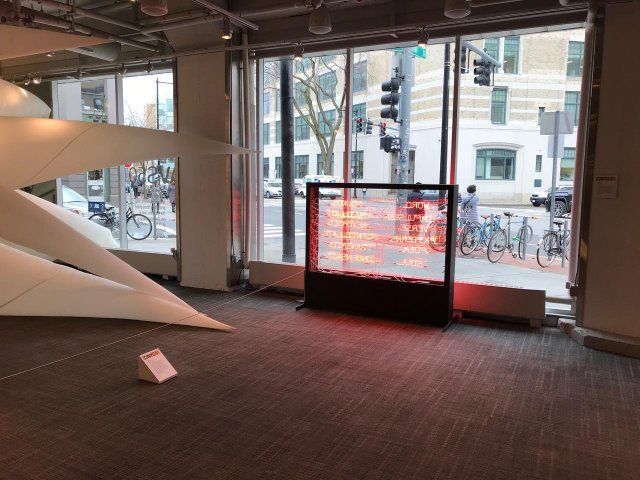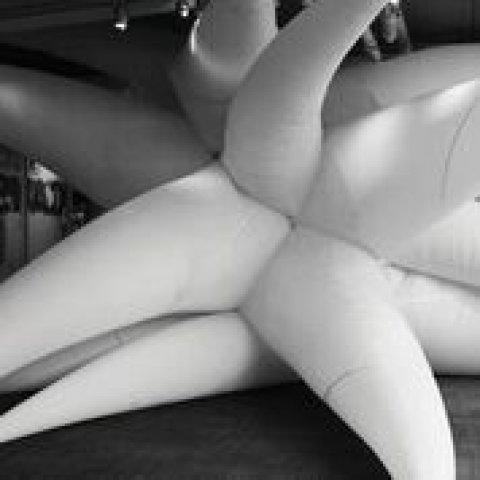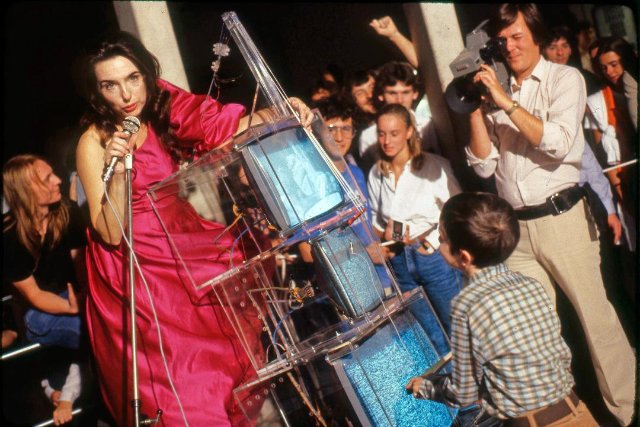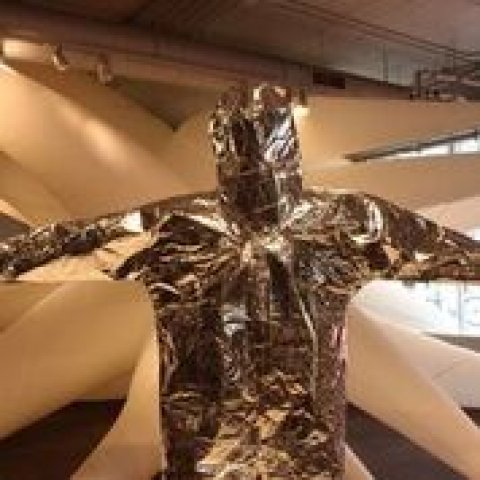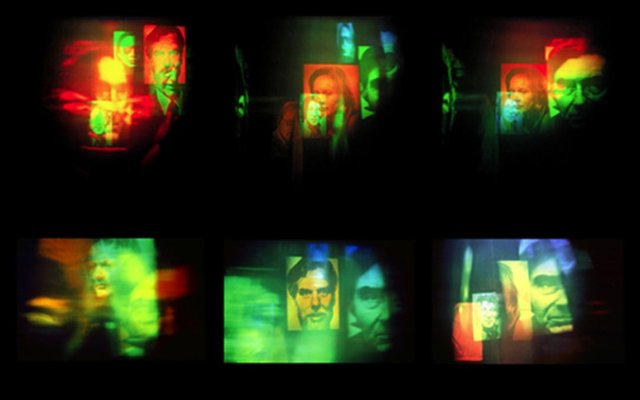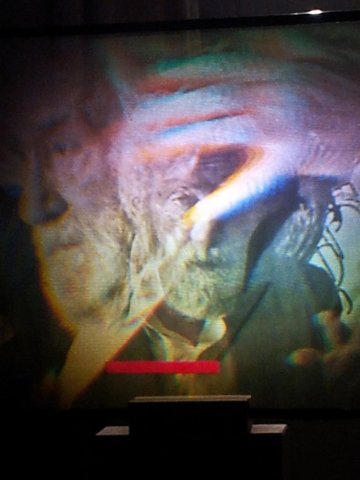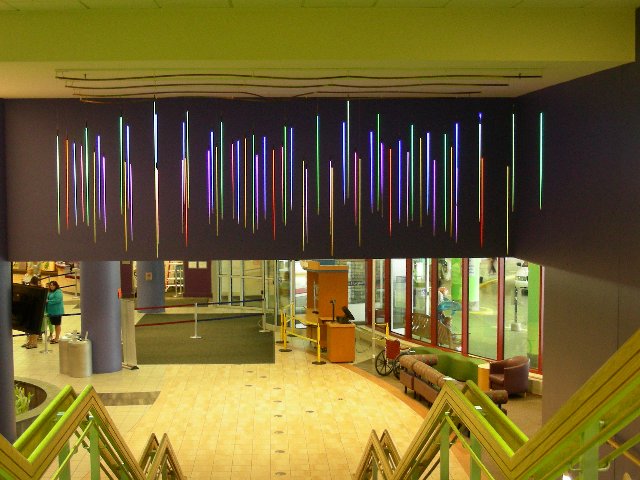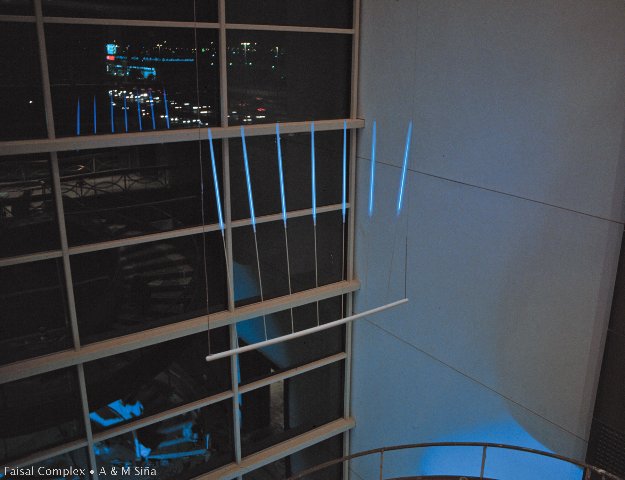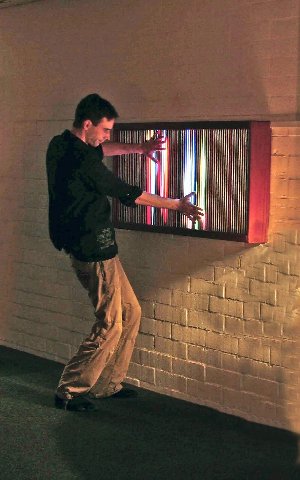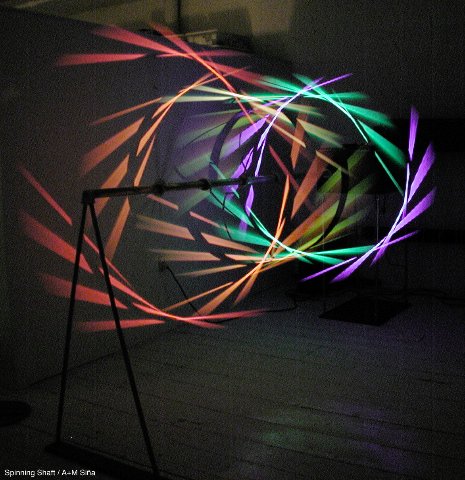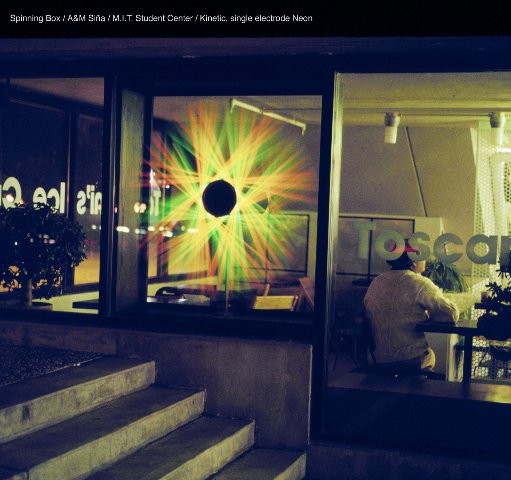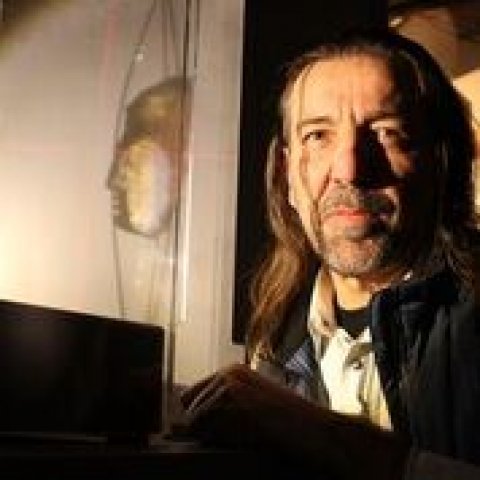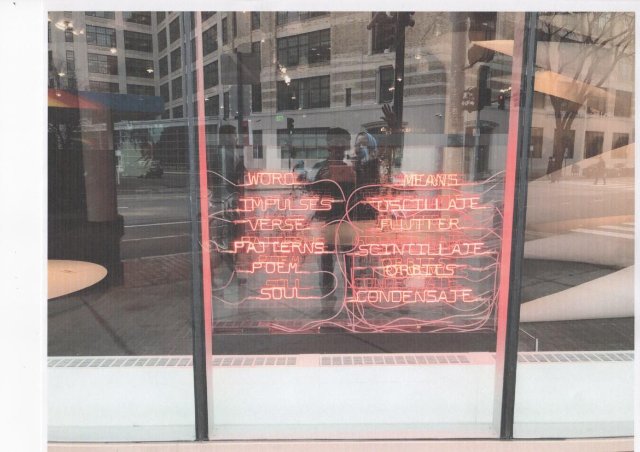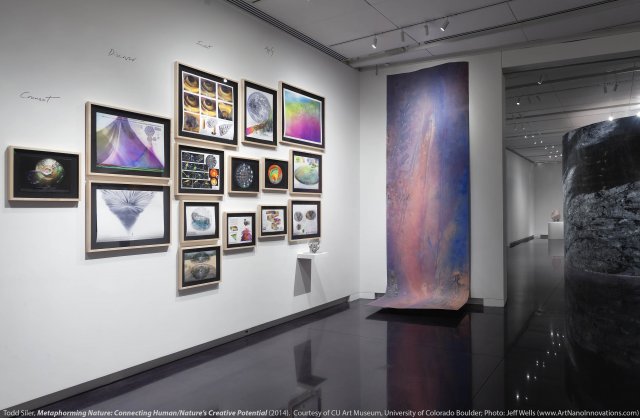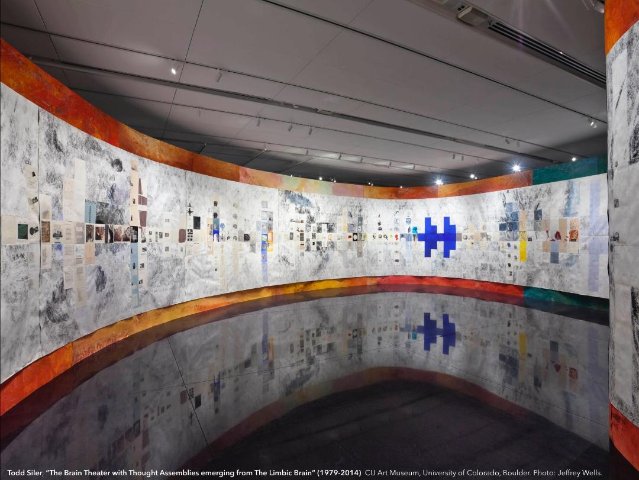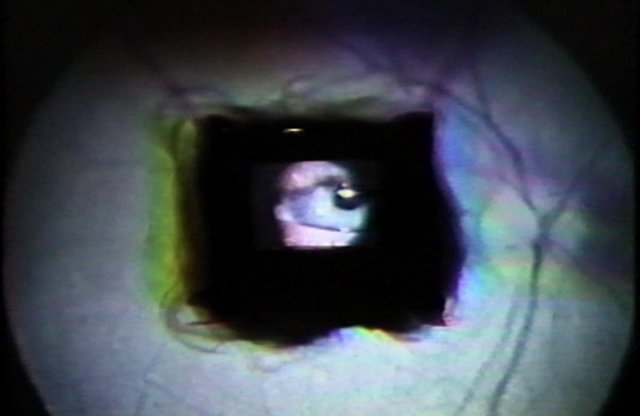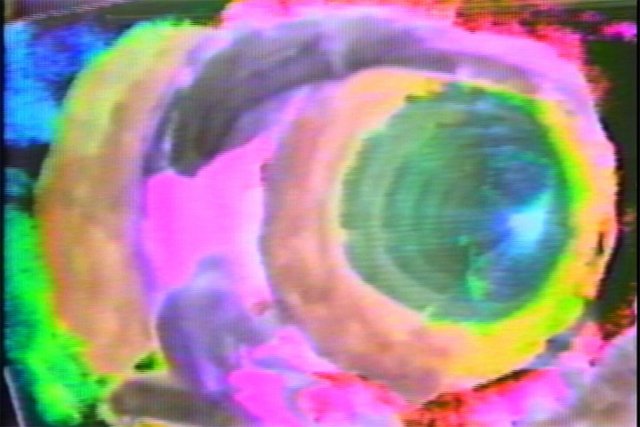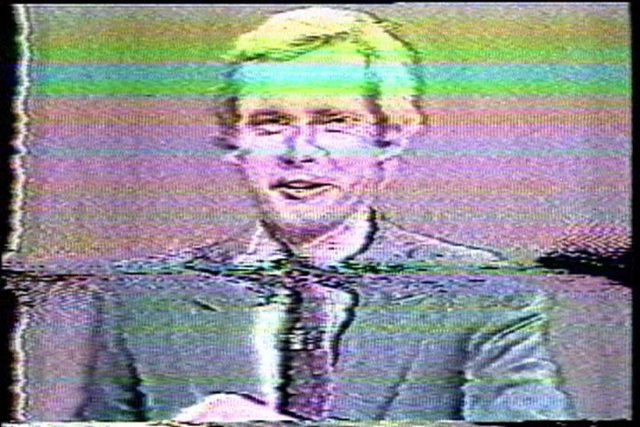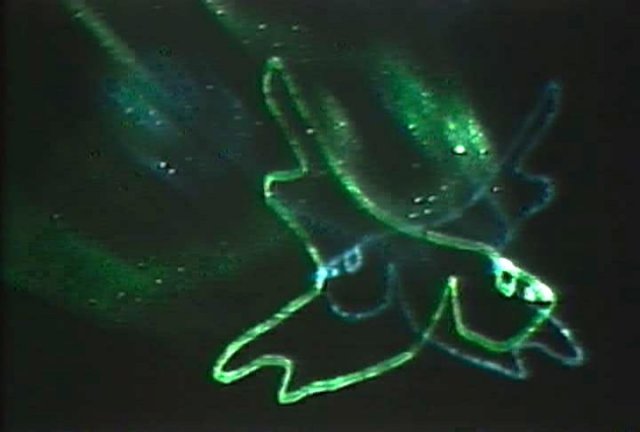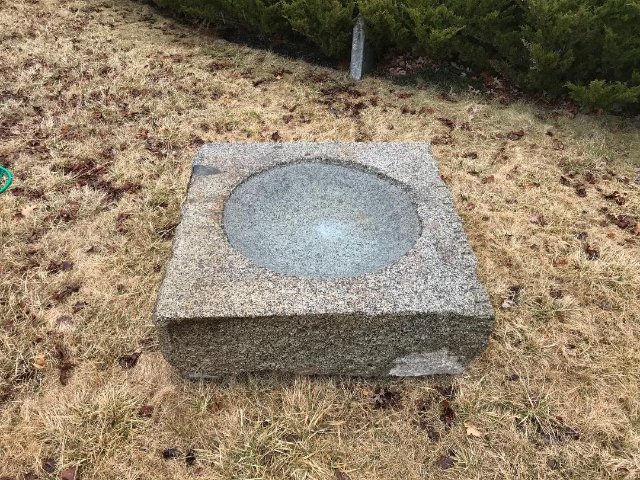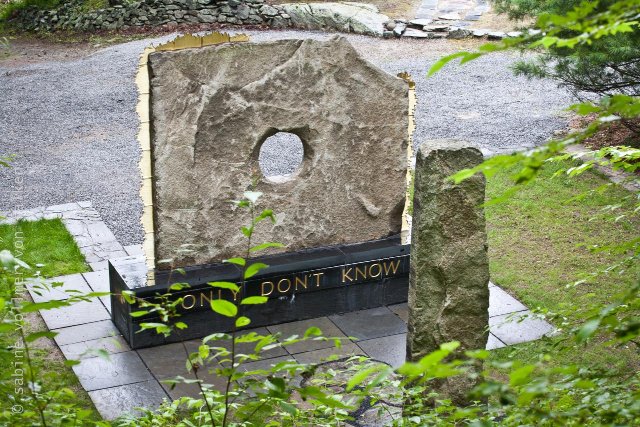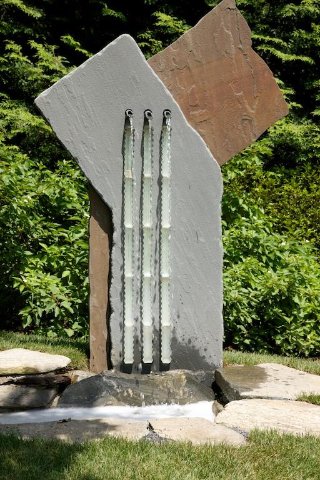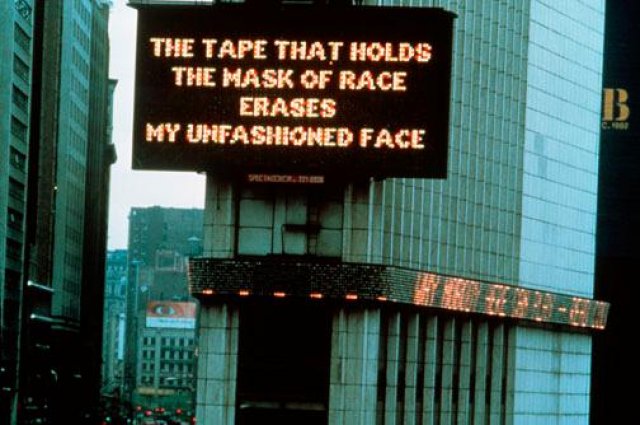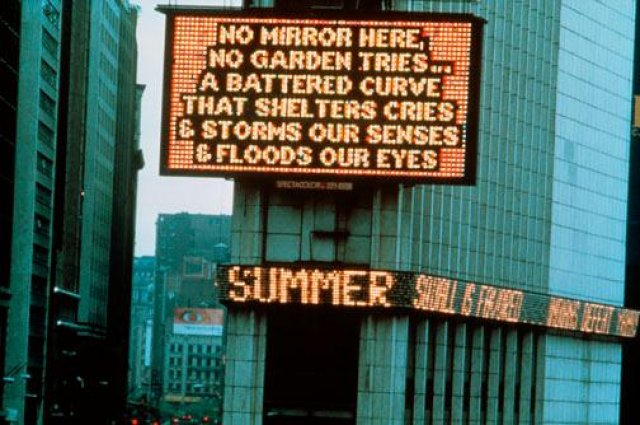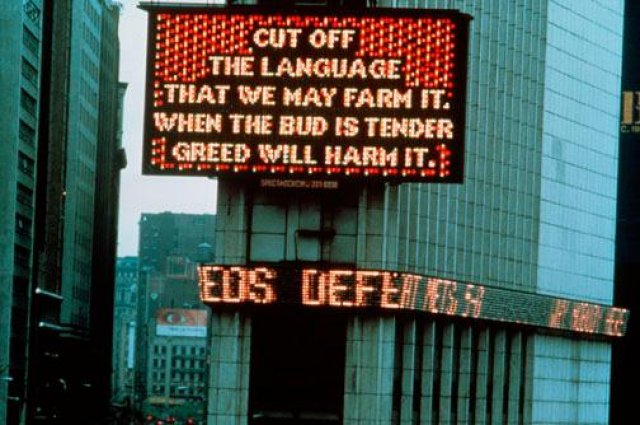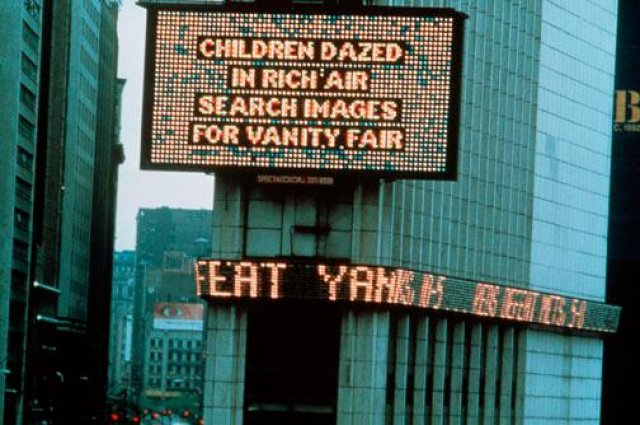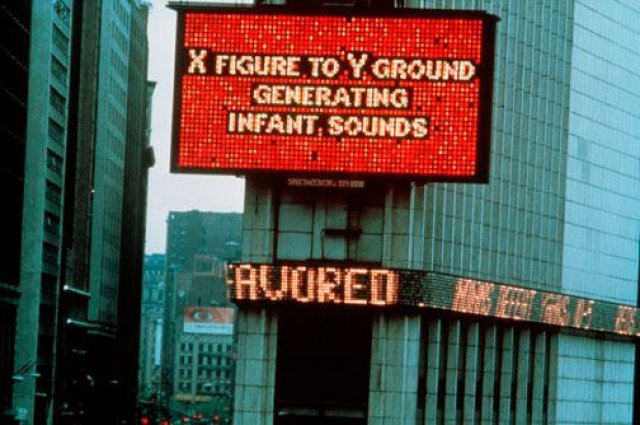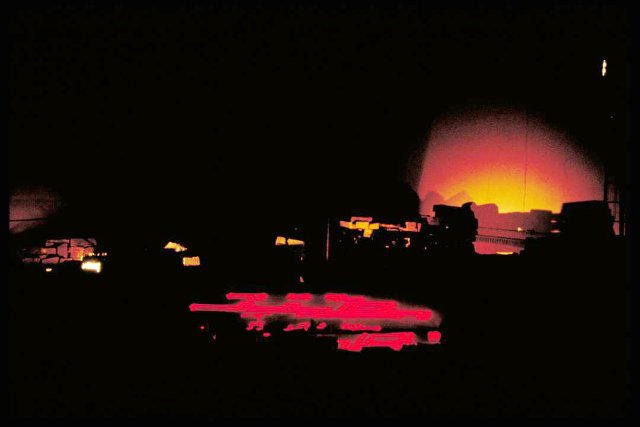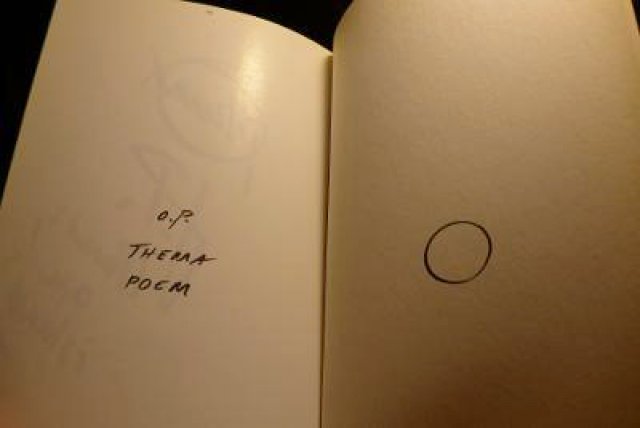CAVS/MIT @ 50
The MIT Museum Exhibitions
By: Astrid Hiemer - Mar 09, 2018
'Celebrating the 50th Anniversary of the MIT Center for Advanced Visual Studies' at the MIT Museum - until 1/31/2019.
265 Massachusetts Ave., Cambridge, Massachusetts and at the Compton Gallery, 77 Massachusetts Avenue.
'Gyorgy Kepes Photographs II, MIT Years 1946-1985,' MIT Museum, Opening March 21st.
'In Our Present Condition,' The School of Architecture and Planning, The Dean’s Office Gallery, 77 Massachusetts Avenue, through April 30th.
The MIT Museum on Massachusetts Avenue in Cambridge, Massachusetts, opened on February 15 an exhibition at the occasion of the 50th Anniversary of the Center for Advanced Visual Studies (CAVS/MIT) without much fanfare. Installations and videos at the museum and the Compton Gallery along the main or ‘infinite’ corridor of MIT are the works by more than 30 former Research Fellows. It will remain open throughout 2018, and the museum announced festivities to mark 50 years of CAVS on April 27. We hope to come together again with many members of the CAVS and MIT community.
On view are time-specific works by former Research Fellows and Directors, Gyorgy Kepes and Otto Piene, celebrating 50 years after the Center’s Opening by Kepes in 1967/68. In addition, a photo exhibit can be seen as of March 21st at the museum’s Kurtz Gallery: Kepes Photographs, MIT Years 1946-1985.
CAVS is the front-runner for several centers, museums and academic entities with similar mandates in North America and Europe. They are modeled on the CAVS concept of collaborations between the arts, sciences and technology. The Center - as it was usually known - lost its prominent location on Massachusetts Avenue, W11, in an MIT planning coup only a couple of years before Piene retired after 20 years at the helm. Following in his footsteps, now located near the MIT Museum, were Directors Steve Benton and Krzysztof Wodiczko. Work and research emphasis expanded with a changing Century towards geopolitics, identity and environmental citizenship. During the most active times of the Piene years, up to 40 artists had received residential or nonresidential appointments, and a total number of 100 projects had been sponsored by the Center and its Fellows in the course of only 10 years.
Finally, CAVS and the Visual Arts Program merged in 2009, when the Program in Art, Culture and Technology (ACT) was installed on East campus in brand new facilities. There have been a number of commemorative events sponsored by ACT since last year and the program will continue to define its own investigations of historical and current applications as the ACT website pronounces in typical academic language: “… creating new spaces for action, recognizing historical echoes of specific sites of knowledge production, and investigating material energies through symposia, exhibits, performances, publications, and radically experimental artistic interventions and practices.”
New online is also a remarkable beginning of The Virtual Museum, where digital documentation of CAVS books and publications, teaching and project documents, as well as works by Fellows are available. MIT appointed more than 200 national and international artists as Research Fellows with short term or multi-year reappointments in the course of its 50 years. The digital archive will continue to be expanded and can be seen and used as research, via the ACT website.
Following are works and artists in the show and the above photo series also contains images of other projects that we received for publication:
First Floor:
Otto Piene, Cereus, Inflatable Sculpture, 2008 – can be seen through the museum’s first floor windows.
Piene coined the expression ‘Sky Art’ in the 1960s and built many inflatable sculptures over 40 years. They have titles such as: Iowa Star, Black Rose, Icarus, Hexagonal Rooster, Blue Star Linz, Grand Rapids Carousel. Many are multi-stories high and sewn into complex structures. Piene was a leader in the sky art and environmental art movements. He inflated the relatively easy portable sculptures and lifted them with helium into skies during exhibitions and festivals in the USA and Europe. Or, he would fill gallery spaces with inflatables, aided by blowers, as in this exhibition, and so create a new spacial divide in a gallery. Sometimes visitors could actually walk into an inflatable sculpture and encounter altered sounds and colors from within. His most famous Sky Art works are probably the 1972 Olympic Rainbow, flown over the closing ceremonies of the Munich Olympics, and Icarus for the sky opera with the same title, by Paul Earls. The opera with inflatable sculptures was performed for Centerbeam in 1978 on the Washington Mall, Washington, DC. Both were attended by large crowds.
Otto Piene, Four Feet of Light, 2010-11 – can be seen on the second floor.
The original Light Ballets were developed by Piene in the 1960s; light as a medium. A black drum’s top was covered with a mobile design-perforated metal sheet, continually turning, and lit from within. It’s really a simple invention, created in simpler times. Then and now, the effects in a darkened gallery are magical or as Piene put it, he was able to create: 'a dynamic sensitivity to the space.’
Nam June Paik and Charlotte Moorman, TV Cello, 1971
As Moorman moved her bow, images would appear on the monitors as a direct feed or prerecorded. Here, the museum installed a video projection next to the TV Cello, of a performance at MIT during a Sky Art Conference in 1982.
Moorman, an avant-garde artist since the 1960s, and Paik, a pioneering video artist, collaborated for many years with TV Cello or TV Bra, among other works and performances. Moorman was a classically trained cellist, yet turned to contemporary composers, beginning with Paik and John Cage, already during her student years at Juilliard School in New York City. Paik and Moorman traveled worldwide together or as solo artists. Paik’s TV and video works were exhibited from Korea to North America and in Europe.
Luc Courchesne, Lightproof Suit, 1982
He collaborated with other CAVS Fellows, Robert Rosinsky and Harriet Casdin-Silver, to build the suit, which is made of mylar with black satin lining so that it prevents light from entering the body. He wore it first during a video performance in 1983, attempting to draw attention to ‘our over-illuminated society’ then! Courchesne, based in Montreal, is a founding member of the Canadian Society for Art and Technology (SAT) and directed the Meta lab for many years. He is currently curator for SAT’s IX symposium.
Mark Mendel, Poetronics, 1978 – This neon-poem has been installed in a first floor window at the museum, visible from the sidewalk.
Mendel has promoted environmental poetry since the 1970s, to free words and verse from the page. Poetronics was first seen in the window of Grolier’s Bookshop in Harvard Square in Cambridge, in 1978. He has written poetry on barns and lifted words into the sky. Times Square Electronic Sign Board – Planting the Hand Made Sky happened in New York City in 1990. Five verses changed electronically, positioned near the top of a building, while drawing attention away from restless and endless advertising. Please view this poem and other works by Mendel in the photo-series.
Second Floor:
Lowry Burgess, The Boundless Cubic Lunar Aperture, 1989
This hologram was developed soon after the 1989 payload by the same name, a first official non-scientific project, went into outer Space aboard the Space Shuttle Discovery. The ‘heart’ of the original artwork is the focal point in the holographic image.
Burgess has led MoonArc for nearly ten years at its project director. It is a collaborative effort by 300 artists, scientists, technologists and engineers at the Carnegie Mellon University in Pittsburgh, Pensylvania. In addition, people from 18 universities and organizations have contributed to this immense project: Four chambers, held together in one structure, contain information from infinite fields of our complex world. The center of the payload is the Symphony for Andromada, which Burgess and Andrew Kaiser composed of original music and earthly sound-scapes and it will be beamed out on the moon. Burgess wrote: "Moon Arc will physically place all the Arts on the surface of the Moon in the ‘Vallis Moretis Crater’ on a ‘robotic mission’ in 2020.” Here a direct link: http://www.moonarts.org/
A twin payload is currently on exhibition at Carnegie Mellon and will be shown at the Centre Pompidou in Paris, France, during the lift-off to the moon in 2019-20. Please follow this extraordinary project, which is also in competition for the Lunar X Prize, sponsored by Google.
While Burgess embarked on the MoonArc project, Todd Siler and scientist, Geoffrey Ozin, concluded Art Nano Innovations. From outer-space to nano-scale, the smallest known measure. Again, visuals on the website are breathtaking: http://artnanoinnovations.com.
Siler has installed for this exhibition in a Compton Gallery case three works from other projects.
Sculpture: Mind Icon: Hunters & Gatherers, 1992-93 and
Monotype Print: Mind Icon: Metaphorming Nature of Mind
Both works were created, while Siler was a visiting artist/scientist at the Computer Aided Design Lab (CAD LAB) in the Department of Mechanical Engineering at MIT. - A third project:
Folio: Metaphorming Minds: Envisioning the Possibilities of Nature, 1991
A limited edition artist’s book with 37 multi-color serigraph and 18 offset reproductions were printed at Old Jaffa Press in Israel. The portfolio was produced during the most intense years in the history of the Middle East, Siler writes, and continues: “….hand-written notes, called Possibilities (on the reverse side of each Mind Icon) are meditations on the state of the world and how we might improve it. They prompt us to wonder where our global tribes of minds are heading in such a hurry, as we dash toward an uncertain destiny…racing to infinity. Here, the history of art mirrors the history of thought. In this mirror reflection, we glimpse the nature of human creativity and the ultimate essential tension: our conflicting passions for love and power. “
Thought Assemblies, a 1979-82 painting, was center stage at the 2014 exhibit The Brain Theater at the University of Colorado (in photo series). It served as the visual component of Siler's doctorate from MIT and was donated in 2015 to The Picower Institute for Learning and Memory and is now part of The MIT Art Collection.
Ionnis Michaloudis, DIAPHANousia, 2003-18
Michaloudis' interest is to combine the physical with the ethereal. He worked with MIT scientists and experimented with aerogel, the lightest solid material, until he succeeded in casting the first silica aerogel artwork. Aerogel is made up of 99.8 % gas with a bluish tint. His objective was to ‘cast clouds.’ Here, he is showing a remake of the original work.
Harriet Casdin-Silver, A Woman III, 1979
This white-light transmission hologram belongs to the series Women in Transition. It is a self-portrait; the nude Casdin-Silver is crouched into a space, just big enough for all her body to be in view while also distorted. Casdin-Silver, an ardent feminist, made often humanistic-political works. She is regarded as one of the most important early holographers in the arts, who innovated and transformed holography from a strictly technological medium into an art form.
Dieter Jung, X-centrics, 1988
This white-light transmission hologram, on acrylic surface, was created by Jung for the CAVS 20th anniversary. In it Jung memorialized portraits of Gyorgy Kepes, Otto Piene, Lowry Burgess, Elizabeth Goldring, Paul Earls, Charlotte Moorman, Juergen Claus and others. From different viewpoints the visual relationship of people in the hologram changes to each other; there is no static position, it seems.
Jung sent images of his hologram: Hommage to Otto Piene, which is divided intonine sections and can also be seen in the photo series. Casdin-Silver and Jung had appointments in overlapping years. They both belong to the original artist-pioneers in holography.
In a second floor gallery one can view videos by: Aldo Tambellini, Reagan election – Bill Seaman, Telling Motions – Betsy Connors, TV Toys – Ellen Sebring, Aviary – Vin Grabill/Elizabeth Goldring, The Inner Eye: from the inside out – Stan VanDerBeek, After Laughter – Antoni Muntadas, Media Ecology Ads (excerpt) - Bernd Kracke, Media Games.
Stairway
Wen-Ying Tsai, Large Tuning Fork, 1972
Tsai was one of the original Fellows, invited by Kepes. He built cybernetic and kinetic sculptures, which were often participatory as well. Other works were titled: Square Tops, 1969, Harmonic Sculpture, 1968 and Double Diffraction, 1973.
Christopher Janney, Soundstair: MIT’18
It is based on the original 1978 Soundstair. Janney uses sound to ‘alter the perception of space.’ He overlaid the museum’s stairway with an interactive light and sound installation to transform the stairs and the surrounding space.
Janney has traveled extensively with Soundstair in the USA and Europe, including installations at the Metropolitan Museum of Art, New York, and the Piazza di Spagna, Rome, Italy. He has created temporary and permanent works in sound, light or color at airports, parking garages, and on plazas.
Alejandro Sina, Air Lines, 2017
The single-electrode neon piece is based on an original artwork of 1975, which was first suspended from MIT’s main lobby during that year. Sina innovated his abstract neon light sculptures over a number of years at CAVS, and developed pieces with titles, such as Spinning Shaft, Coronal, Dragon Fly. Also, Piene and Sina successfully lifted the Neon Rainbow into a sky by attaching a neon line below polyethylene tubing.
Compton Gallery, Documentary Videos:
Paul Earls: Laser-Music Work, by Vin Grabill, 1984 – Desert Sun/Desert Moon, by Vin Grabill, 1986/2018 – Otto Piene’s Sky Art, by Vin Grabill, 2010 – Centerdisk, by Rus Gant & Vin Grabill, 1984 – Elizabeth Goldring, Rob Webb: A Visual Language for the Blind, by Ellen Sebring, 1991
Compton Gallery Cases:
Panos Kouros, Performative poetry actions at CAVS, 1989-1993
One of the actions during those years resulted in the book, Center Poems, by several CAVS poets. Various materials are displayed here relating to investigations and discussions of ‘performative poetry’ and the relationships between active text and physical space.
Eric Begleiter, The Power of Seductive Beauty, 1987-97
Begleiter developed edible holograms and specifically, he invented ‘holographic chocolate.’ In later years he worked on edible holographic tablets and capsules with pharmaceutical companies. He stated: “…a goal to combining physical and psychological effects to the end of creating a consumer experience that integrated art, science and medicine. “
Michio Ihara, Light Tower models and installation photographs, 1974
Ihara wrote: “ Light, shadow and reflections are all extensions of the sculpture.” He constructed and placed elegant and imposing architectural metal sculptures in America, Europe and Asia, often with corporate clients. Here, he is showing one of his beautiful models.
Dan Dailey, Light Bulb Prototype, 1976 sketches – 2018 modified prototypes
Glass has always been Dailey’s medium, as a glass artist and using industrial processes. While collaborating with the Research Lab for Electronics at MIT, he focused on developing the technical knowledge and recently prototypes for his thick light bulb sculptures. He defines them as ‘glowing elements inside a curved lens-like mass.’
Rus Gant, Vin Grabill, Ben Davis, CAVS/MIT Centerdisk/Skydisk, 1983
This team of artists, under Gant’s direction, managed to document works by more than 60 CAVS Fellows as of 1968. It was probably the first interactive video disk of its kind and a technical accomplishment at the time.
Jennifer Hall, Computer Controlled Marionette for Out of the Body Theater, 1986-88
Starting with Kepes, all like minded artists hold firm in their artistic/creative vision while collaborating with scientists and technologists. Hall added : “… the voice of contemporary artists in the development of new technologies, believing that art should be included in the discourse about emerging interdisciplinary practices.”
We estimate that circa 20 reports/projects about CAVS and the arts at MIT can be found on BFA in its archives of more than six-thousand articles by: Charles Giuliano, Zeren Earls, Mark Favermann and Astrid Hiemer. Please peruse.

